One of the most important skills you can teach your dog is the “Drop It” cue.
Want to teach your dog to play fetch? Teach her to drop the ball on cue. Want to teach her to spit out an item that is dangerous or that she shouldn’t have in her mouth? Teach her to drop it without the imminent “chase me” game that often ensues.
When teaching puppy classes, I’ve often found that — aside from socialization — “Drop It” is one of the skills owners are most excited about teaching their puppy.
Why? Puppies love the game of chase. They often pick up shoes in hopes that you might chase them around the house. What a fun game!
But while there are times in which this type of play is acceptable, you want to be able to tell your dog to release the item she is holding when necessary.
Dogs also love to eat things that we know could be bad for them or items we don’t want them to destroy. Accordingly, “Drop It” is a vital foundation skill to teach every pup.
Read on to learn how to train your dog to drop what she’s holding on command!
Drop it vs Leave it: How They’re Different
Although they complement each other well, “Drop It” and “Leave It” are fundamentally different cue commands.
- “Drop It” is a cue we use if our pups already have something in their mouth and we want them to spit it out.
- “Leave It,” on the other hand, means to asking your dog to leave something alone and not to pick it up to begin with.
Today, we will concentrate on “Drop It,” specifically.
The Importance of Teaching Your Dog to “Drop It”
As I mentioned, “drop it” is one of the most important cues to teach your pooch. It could be lifesaving!
Here are five reasons why teaching “drop it” should be one of your top priorities:
1. Picking up Something Dangerous
The world is full of dangerous doggie street food, like chicken bones that get caught in throats and splinter in bellies. There are lurking dangers everywhere. Just the other day my pup picked up a spent firework at the park!
Most dogs, when they find something valuable, will either run with it, swallow it quickly, refuse to drop it, or guard it from potential threats (you or other dogs). But, by teaching your dog a “Drop It” command, you can get her to spit out a potentially dangerous item before it harms her.
2. Preventing Resource Guarding
Taking valued items directly out of your dog’s mouth is potentially dangerous.
It can also create or exacerbate resource guarding behaviors. Resource guarding behaviors are threatening displays used to keep others away from a valued resource, and they can lead to bites.
However, if your dog knows a “Drop It” command, you can get her to spit out a prized possession without triggering guarding behaviors.
3. Avoiding the Chase
What dog doesn’t love to be chased? It is a favorite game of most dogs out there. It becomes quickly apparent to your pooch that if she chooses the right item, her favorite humans will chase her around. She ends up having a great time while you end up increasingly frustrated.
Teaching “Drop It” puts an end to the unwanted game and helps you keep your sanity with a playful pup!
4. Teaching Fetch
Not all dogs are natural fetchers. Some dogs just love fetch so much that they quickly learn that when they bring the item back and drop it at your feet, you throw it all over again. It’s self-rewarding!
Other dogs need a little extra help learning how to play fetch. For example, my pup Juno prefers tug. She does love to chase, but when she returns to me, her urge to play tug supersedes her desire to chase the ball. Therefore, it’s more rewarding for her not to drop the item.
In order for us to learn how to play fetch together, we’ll need to work on her “Drop It” command.
5. Teaching Tricks
If you have ever wanted to teach your dog to put away her toys, fetch you the newspaper, carry a basket, or grab you a beer out of the fridge, “Drop It” is an integral part of all of these fun party tricks.
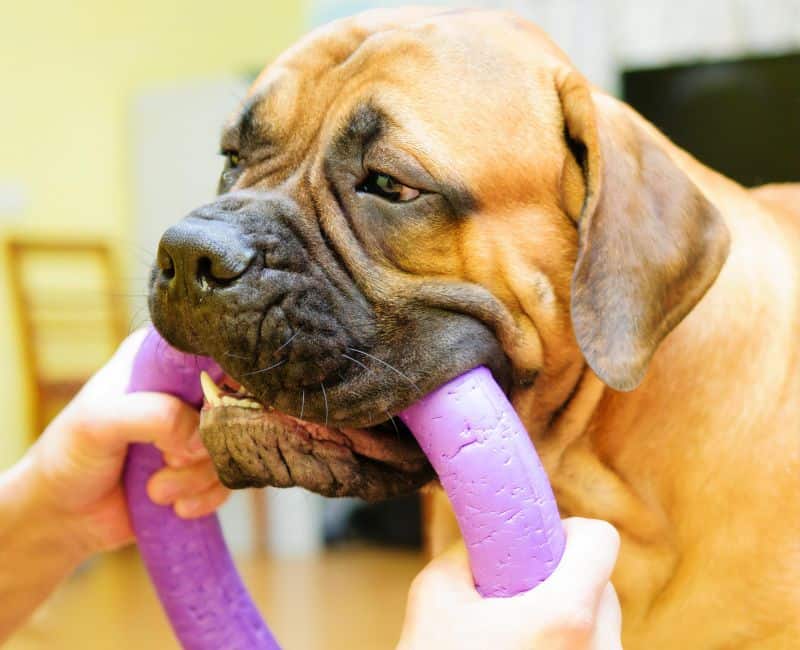
How to Teach Your Dog to “Drop It”
Before we get into the specifics of teaching your dog to “Drop It,” there’s one essential thing to remember (that applies to most general dog training) — always make sure that you keep the lesson enjoyable for your dog!
I hear so many people, in a militant voice, demand their pooch to “Drop It!” and then forget to follow through with a reward. Treats, praise, and fun should all be incorporated as rewards for a successful drop it. Make “Drop It” a super fun game to ensure your pup will be successful.
Dogs want to do things that are fun and benefit them, and she will be more likely to follow through if we set her up to be successful.
Teaching “Drop It” is quite easy. It’s simply a matter of being consistent, starting with items that are easy for your dog to drop (aka less valuable items), and working your way up to the harder items (like that jar of peanut butter you dropped on the floor)!
Follow the steps outlined below, and you’ll be well on your way to instilling the command and making your dog safer.
Step One: Initiate Play
Using a toy your dog enjoys playing with, such as a tug rope, start up a play session. Have your doggo grab the rope and play a short session of tug.
Step Two: Wait for the Drop
After a moment or two, stop playing with your pooch and wait. Do your best to be boring and wait for your dog to naturally drop the toy. The first few times may require some patience, but she will eventually spit the toy out.
As soon as the toy falls out of her mouth, say: “Drop It” and hand her a treat from your pocket as a reward.
As she takes the treat, pick the tug toy up. Try to avoid bribing her to drop an item. You can avoid this by not showing her the food reward until after she spits out the item from her mouth.
Trainer Pro Tip: If your pupper is too quick for you and manages to re-grab her toy before you can get your hands on it, try tossing the treat a few feet away to give yourself some extra time and space to be able to pick up the toy while your dog gets up to go after the goodie.
Step Three: Practice the Cue
Repeat! Grab the tug toy again and play a short game of tug. Then stop, wait for the drop, pair the action of spitting the toy out with the cue word: “Drop It!”, then reward her.
Step Four: Increase the Difficulty
Now that your dog has gotten the hang of dropping her tug toy, it’s time to slowly increase the value of the toy or item you want her to drop.
Does your doggo love balls? Frisbees? Squeakie toys? Try using these items once she has mastered her less exciting toys.
Try the Trade Game for Ultra Irresistible Drop It Items
While your pup is still working on polishing her “Drop It,” you may find yourself in situations where you want your dog to drop an item that is ridiculously high-value and way beyond her skill level (for example, things like chicken bones or rabbit poop — you know, the really good stuff).
In these situations, you’ll want to incorporate the trade game. Basically, trade your dog something awesome in exchange for whatever she currently has in her mouth.
You could, for example, grab a spoonful of peanut butter or a tub of yogurt (something irresistible) and simply trade her one item for the other.
While this can be considered a bribe — and bribes aren’t exactly ideal — sometimes a trade is the only way to help your pup succeed with really high-value items.
There’s no point in yelling your “Drop It” cue repeatedly or chasing her around the house because the cue will begin to lose its meaning and value.
If you aren’t confident your dog will listen to your drop it command, try the trade game to ensure success (even if it’s a bit of a cheat)!
Potential Pitfalls and Problems
As with teaching your dog any new behavior, it’s important to work in baby steps until you reach your end goal. Be sure to set her up for success. If you’re consistent, your pup will be consistent too!
Sometimes we run into small barriers in training. And they are just that… small!
Here are some common mistakes and missteps that may lead to potential pitfalls.
1. She is more interested in the food reward and won’t take the toy after the first few repetitions.
This isn’t all that uncommon. Particularly if food is far more desirable for your dog than a toy!
Try better matching the value of the item you’d like your dog to drop by either raising the value of the item itself (try her favorite squeaky toy instead of a tug toy) or you could slightly lower the reward value (try kibble rather than cheese, for example.)
Save the cheese or other super high-value treat for when the items you want her to drop get increasingly more valuable.
2. She is more interested in the toy than the food reward.
Perhaps she simply won’t let go of her toy. In this case you’ll want to increase your food value (cheese instead of kibble) and decrease the toy value. Or, if she is very toy motivated, simply use a second toy as her reward.
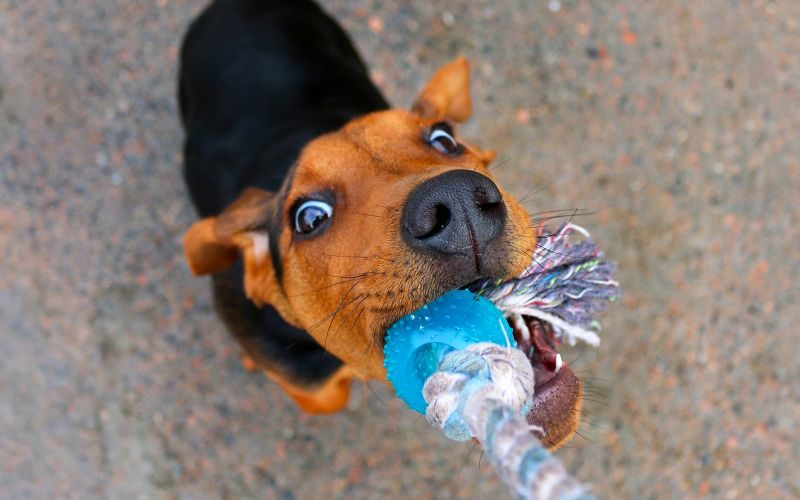
For example, you could use two balls, rewarding her with one ball when she drops the other on cue. Or, play a short game of tug as a reward for dropping the tennis ball. Basically, just make sure that your reward is something your dog really, really likes — whether that’s a toy or treat!
3. She loses interest.
The key to keeping your pet’s interest is to ensure the training session remains fun and easy. If you are shouting “Drop It” in a panicked and angry voice, the game could quickly lose its appeal! Additionally, if your rewards aren’t valuable enough, she may be less motivated to work for “pennies.”
4. She is good at dropping her ball, but not things she shouldn’t have in her mouth.
This is due to a common mistake that people make: Expecting too much too quickly! Your dog may learn to spit out low-value items pretty easily, but it may take some practice to get her to spit out high-value items.
You need to build up slowly towards your end goal. Start easy, with her least favorite toy, then slowly increase the value of the item you’d like her to drop while increasing the value of the reward.
It is also a good idea to practice with all kinds of different items. Dogs are not able to generalize in the same way that you are I can. This means that she will need to learn that “Drop It” doesn’t just apply to her ball, but to any item in her mouth.
5. The cue doesn’t seem to work anymore.
Another very common problem with the “Drop It” command is lack of practice.
People tend to reach a certain level of compliance they are happy with and then expect that level of compliance every time. But you will need to keep practicing – those drop it skills get rusty without practice!
So, switch up the difficulty levels, the setting (inside, outside, at the park) and the items, and practice forever. Then, when you’re in an emergency, she is much more likely to automatically comply with your request!
Emergency Measures: What to Do if Your Dog Grabs Something Dangerous
If you find yourself in an emergency – your pup has grabbed something dangerous – and she’s not quite ready for this expert level “Drop It” situation yet, try to avoid running after her yelling “Drop It” until she has swallowed something harmful.
Doing so is pointless, it has the opposite desired effect. It ruins your cue word, and it could even potentially be scary for some pups.
Instead, try to trade her for something irresistible and save the cue for times when she will execute the cue perfectly.
Your instinct might be to force open her mouth to remove the item in an emergency. This technique can be dangerous for you and your dog.
It puts you at risk of being bitten and could make her swallow or choke on the item. It can also increase the chance that she will become more protective over items in her mouth in the future and cause her to resource guard items.
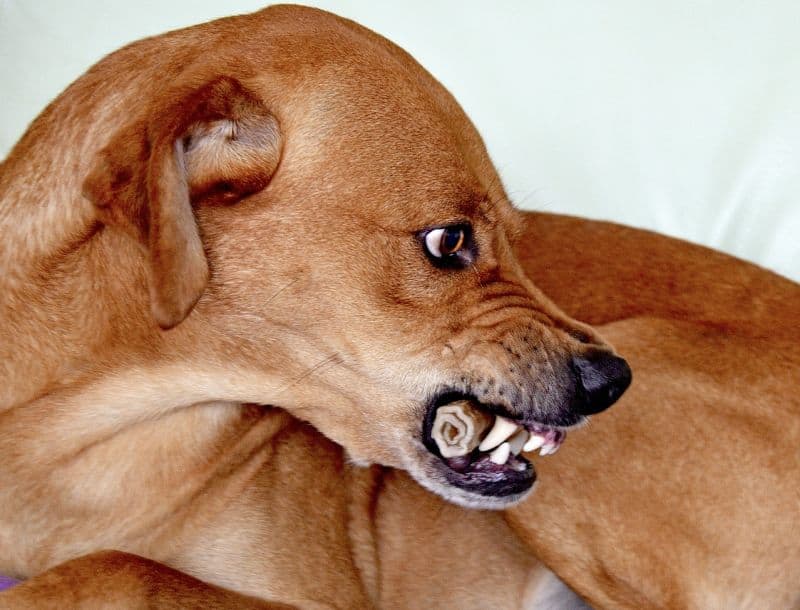
But, in extenuating circumstances, when it is vital that your pupper doesn’t swallow something dangerous, such as chocolate, grapes, or chicken bones, this is your best emergency option.
This is all the more reason, however, to make sure the cue for “Drop It” is strong and well practiced!
***
Teaching “drop it” is an important (even lifesaving) skill every fluffy four-footer need to learn.
Has there ever been a time when your pup had something she shouldn’t in her mouth and using the “drop it” cue saved her? Or maybe a time you wished that you had practiced that “drop it” cue a little more?
Let us know all about your experiences in the comments below!
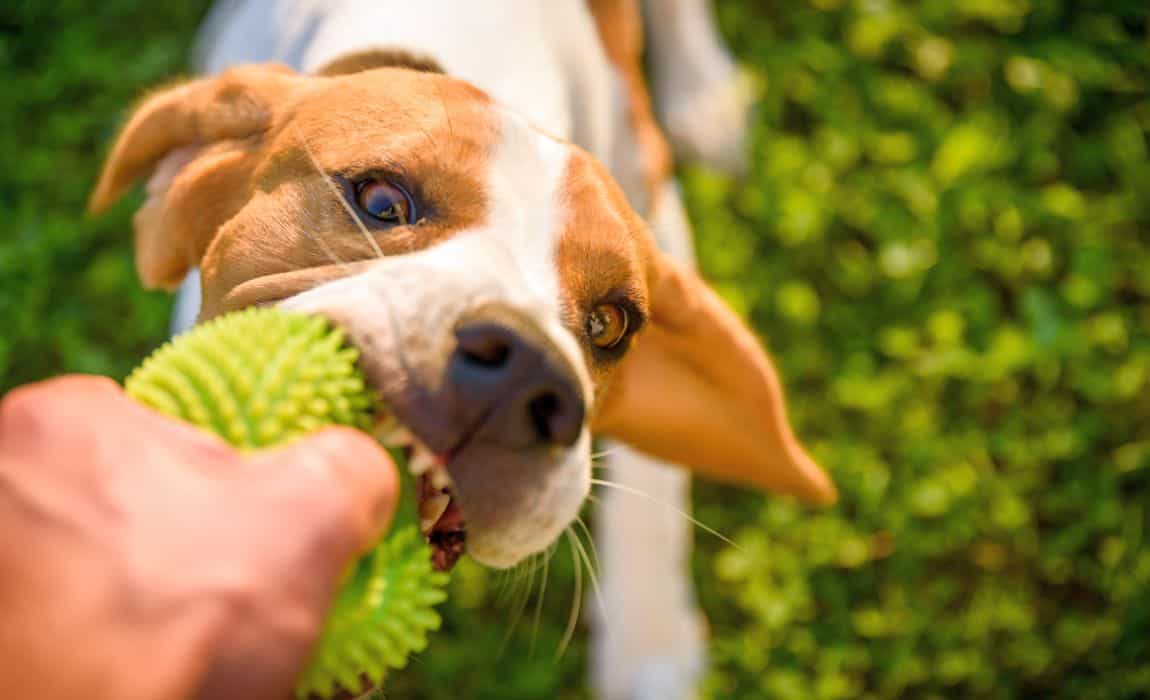

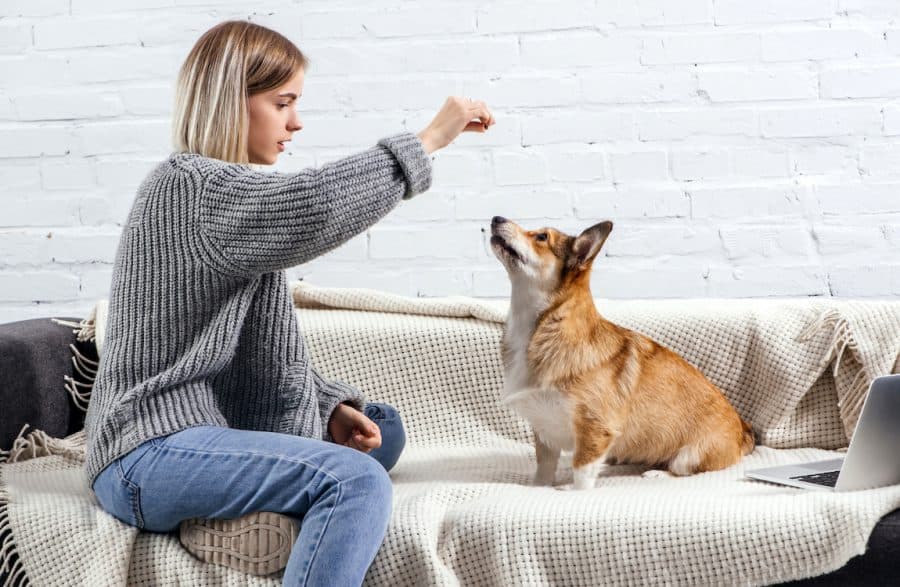


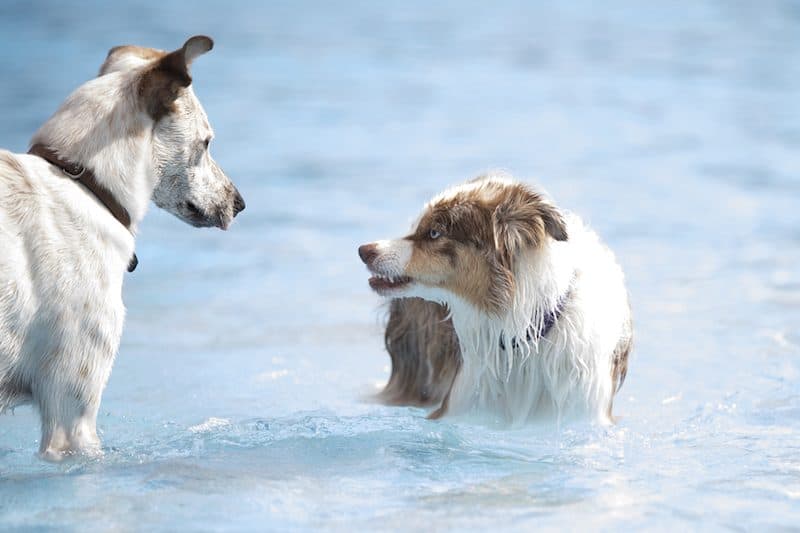
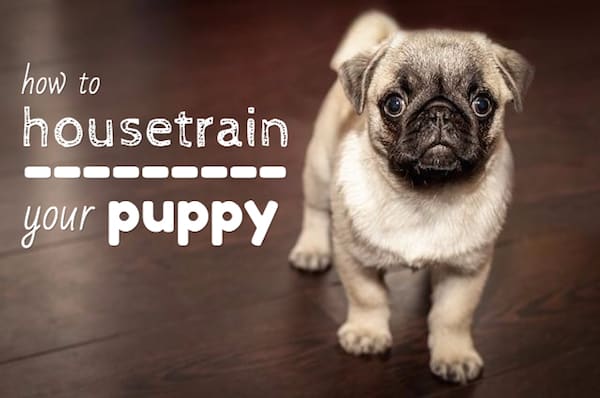
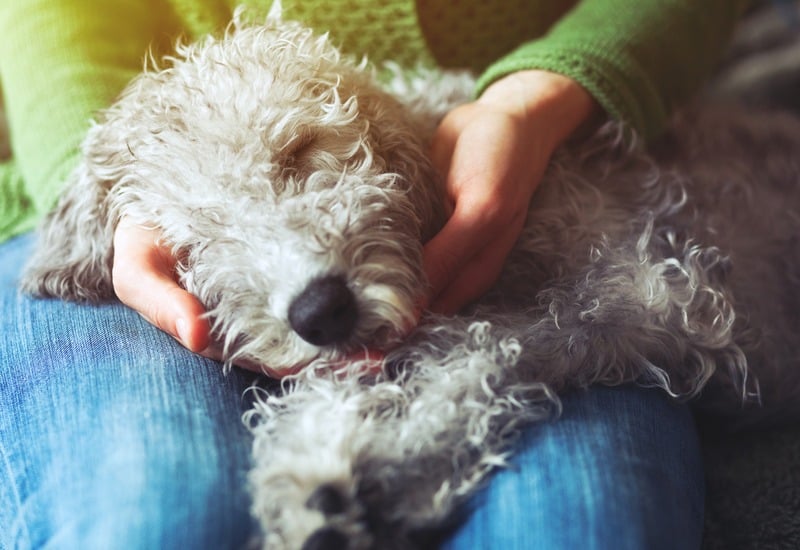
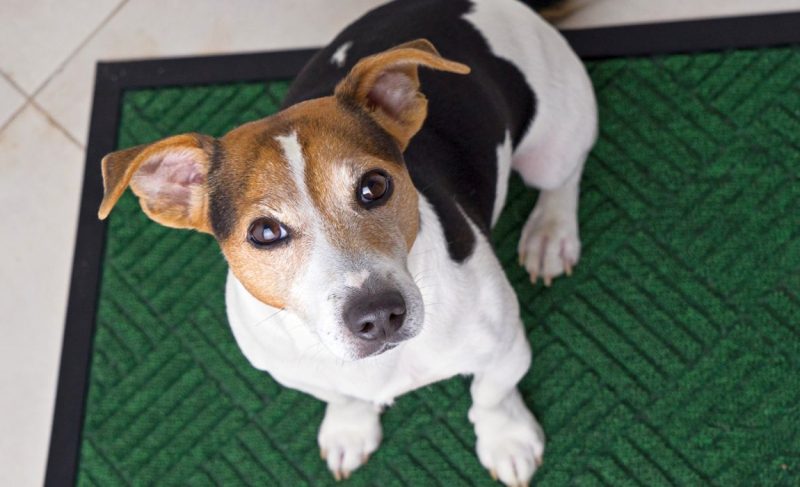
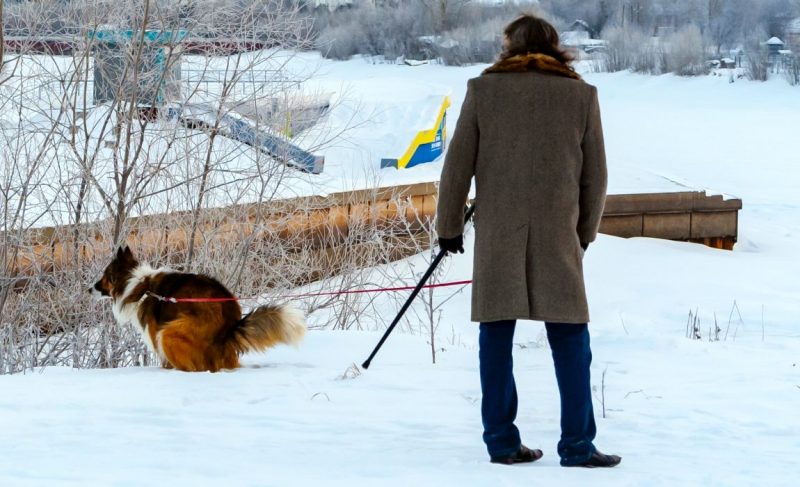
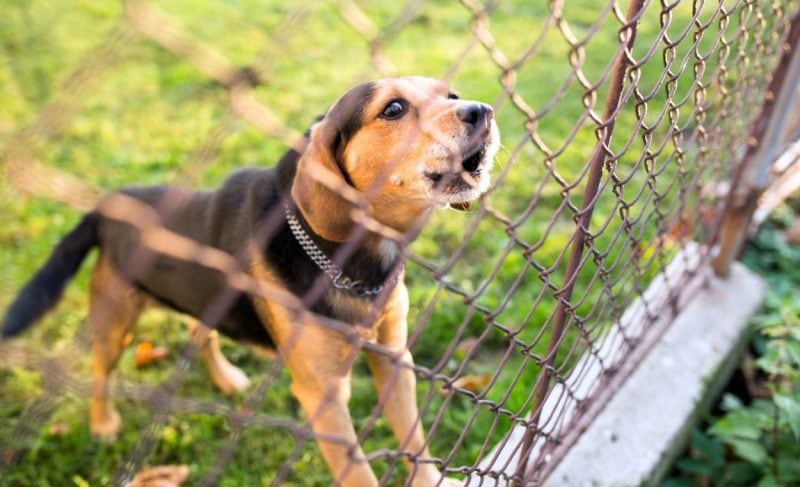
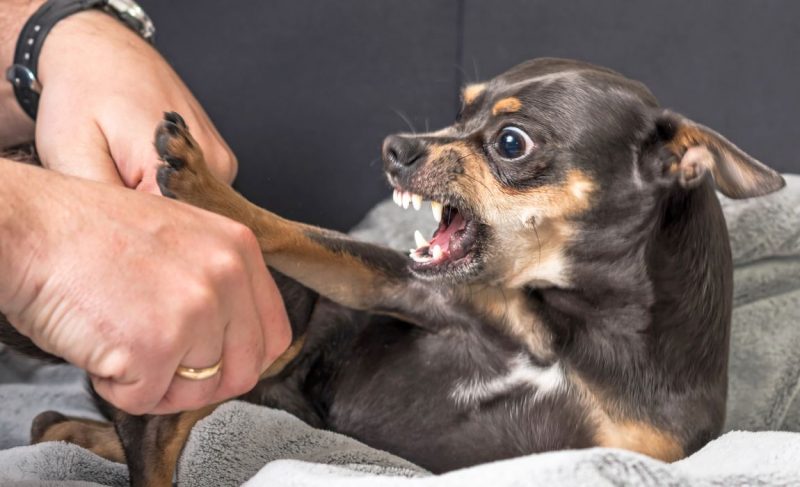

Leave a Comment